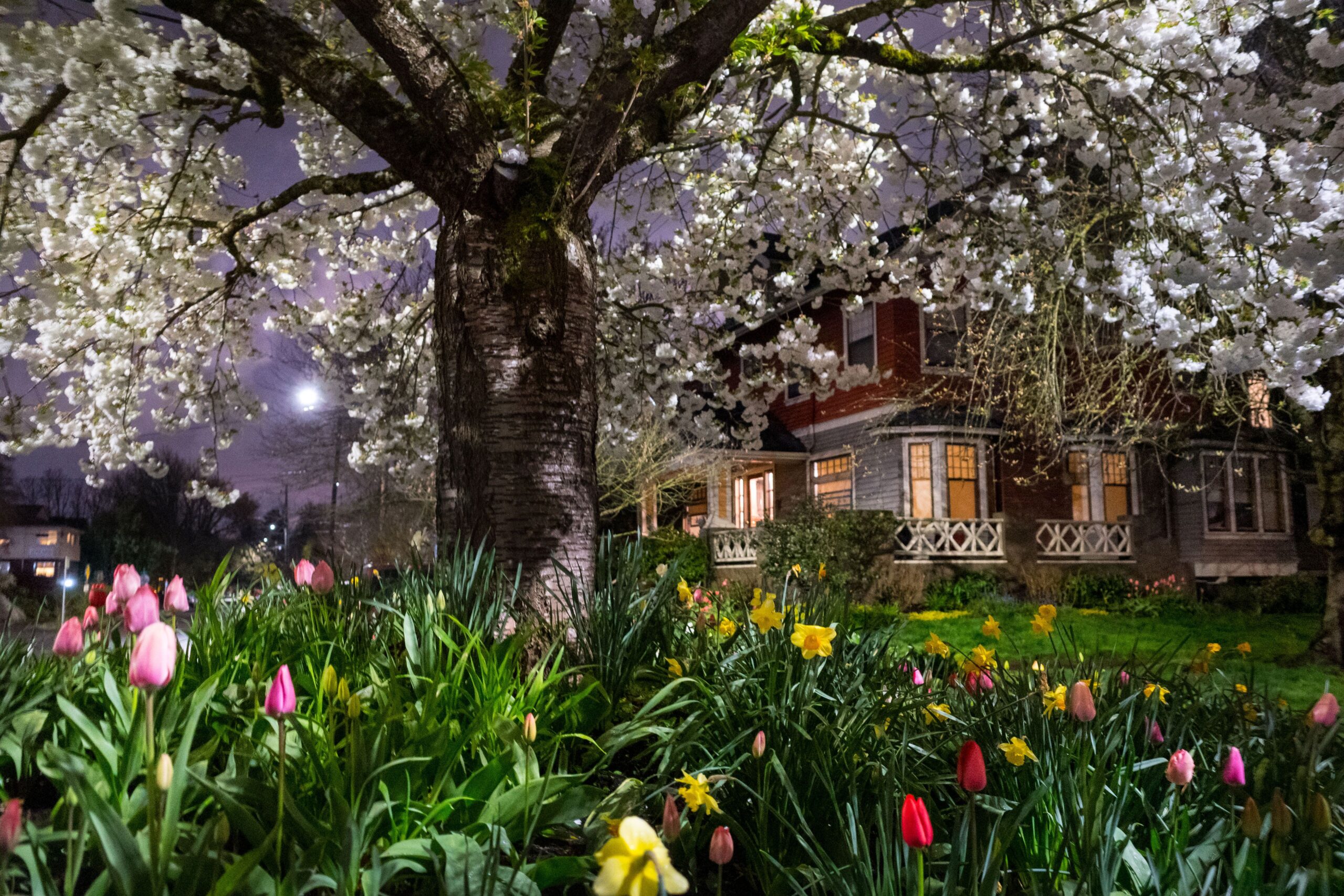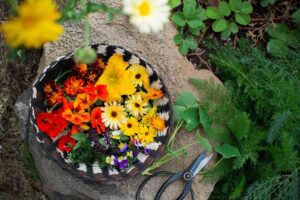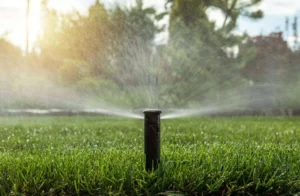Creating a Moon Garden with Night-Blooming Plants
A moon garden transforms your outdoor space into a magical nighttime retreat filled with luminous flowers that glow under moonlight. These enchanting gardens feature plants that bloom at night, offer evening fragrance, or have silvery foliage that reflects moonlight. Perfect for those who work during the day or simply enjoy evening relaxation, a moon garden creates a tranquil space to unwind after sunset.
Why Create a Moon Garden?
Moon gardens serve multiple purposes in your landscape:
- Extended garden enjoyment: Appreciate your garden well into the evening hours
- Nocturnal wildlife attraction: Support night pollinators like moths and bats
- Stress relief: Create a peaceful retreat for evening meditation or relaxation
- Unique landscape feature: Add a distinctive element to your property
- Evening entertainment space: Perfect backdrop for nighttime gatherings
According to the National Garden Bureau, gardening activities can improve mental health and reduce stress levels. A moon garden specifically designed for evening enjoyment provides these benefits during times when many Americans are finally free from work and other daytime obligations.
Planning Your Moon Garden
Selecting the Perfect Location
When choosing a spot for your moon garden, consider:
- Moonlight exposure: Select an area that receives ample moonlight without obstruction from buildings or trees
- Viewing accessibility: Position near patios, decks, or windows where you’ll regularly enjoy the view
- Privacy considerations: Create a secluded feeling with strategic placement
- Proximity to seating: Ensure comfortable spots to sit and enjoy the garden
The ideal location combines good moonlight exposure with convenient access from your home. South or west-facing areas often work well as they receive evening light and are visible from common gathering spaces.
Essential Design Elements
Your moon garden should incorporate these key features:
- Reflective surfaces: Include water features, mirrors, or light-colored stones
- Defined pathways: Create walkways with light-colored gravel or stepping stones
- Comfortable seating: Add benches or chairs for evening enjoyment
- Subtle lighting: Install low, warm lighting that complements rather than overpowers moonlight
- Containment elements: Use borders, planters, or landscaping to define the space
Night-Blooming Plants for Your Moon Garden
The stars of your moon garden will be plants that come alive after dark. Here’s a comprehensive table of night-blooming plants well-suited for US growing conditions:
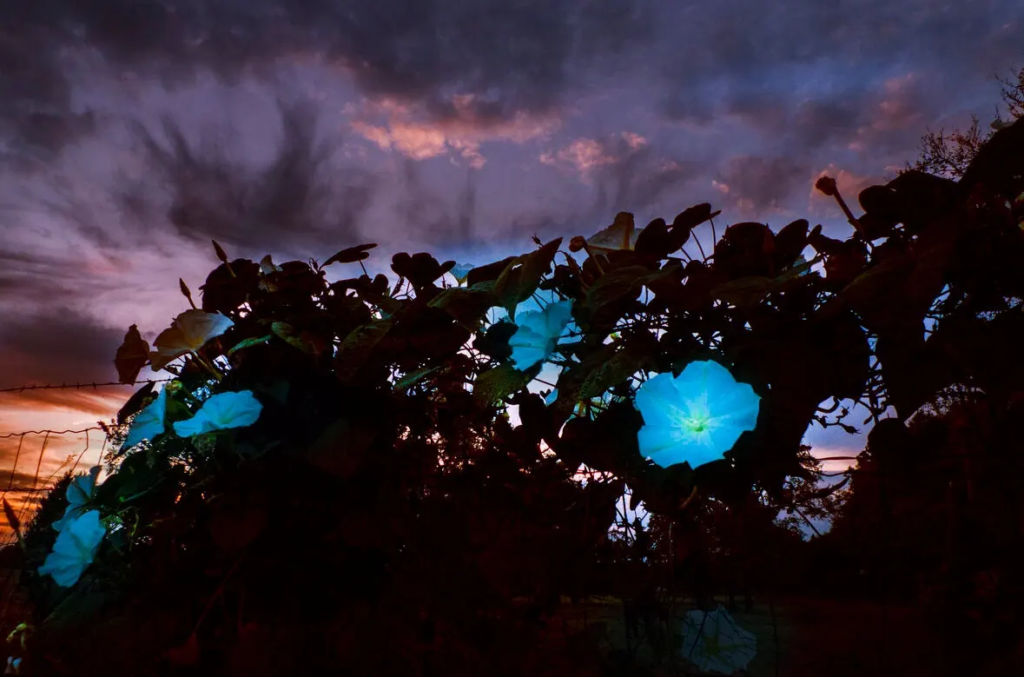
| Plant Name | USDA Zones | Bloom Time | Fragrance | Height | Special Features |
|---|---|---|---|---|---|
| Evening Primrose (Oenothera) | 4-9 | Summer-Fall | Light | 1-3 ft | Yellow blooms open in minutes at dusk |
| Moonflower (Ipomoea alba) | 10-12, annual elsewhere | Summer-Fall | Strong, sweet | Vine, 10-15 ft | Large white trumpet flowers |
| Night-Blooming Jasmine (Cestrum nocturnum) | 8-11 | Summer | Very strong | 8-10 ft | Highly fragrant, greenish-white flowers |
| Evening Stock (Matthiola longipetala) | Annual | Spring-Summer | Strong, clove-like | 1-2 ft | Purple-pink flowers, most fragrant at night |
| Night Phlox (Zaluzianskya capensis) | Annual | Summer | Honey-almond | 12-18 in | White/purple pinwheel flowers |
| Night-Blooming Water Lily (Nymphaea) | 4-10 | Summer | Slight | Floating | Opens evening, closes morning |
| Datura (Datura meteloides) | 5-10 | Summer-Fall | Sweet, intense | 3-4 ft | Large trumpet flowers, poisonous |
| Angel’s Trumpet (Brugmansia) | 9-11 | Summer-Fall | Strong, sweet | 6-15 ft | Pendulous trumpet blooms, poisonous |
| Night-Blooming Cereus (Epiphyllum oxypetalum) | 10-11 | Summer | Sweet vanilla | 10-20 ft | Spectacular one-night blooms |
| Four O’Clocks (Mirabilis jalapa) | 7-11, annual elsewhere | Summer-Fall | Sweet | 2-3 ft | Opens late afternoon, various colors |
Plants with Silver or White Foliage
Complement your night-bloomers with plants featuring silvery or white foliage that reflects moonlight:
- Lamb’s Ears (Stachys byzantina): Soft, silvery-white leaves
- Silver Mound Artemisia (Artemisia schmidtiana): Finely textured silver foliage
- Dusty Miller (Senecio cineraria): Bright white, deeply lobed leaves
- Silver Sage (Salvia argentea): Large, woolly silver leaves
- White Caladium (Caladium): Bright white leaves with green veins
Fragrant Evening Plants
These plants release their strongest fragrance after sunset:
- Night-Scented Stock (Matthiola longipetala): Sweet clove scent
- Nicotiana (Nicotiana alata): Sweet tobacco fragrance
- Lavender (Lavandula): Calming herbal scent
- Honeysuckle (Lonicera): Sweet nectar fragrance
- Garden Heliotrope (Heliotropium arborescens): Vanilla-like scent
Planting and Maintenance Tips
Best Planting Practices
Follow these guidelines for successful establishment:
- Timing: Plant in spring after last frost for most regions
- Soil preparation: Amend soil with compost and ensure good drainage
- Spacing: Allow adequate room for growth, especially for larger specimens
- Depth: Follow specific planting depth recommendations for each species
- Initial watering: Water thoroughly after planting and maintain consistent moisture until established
According to the USDA Plant Hardiness Zone Map, understanding your specific growing zone is crucial for selecting appropriate plants. Check each plant’s zone compatibility before purchasing to ensure winter survival.
Seasonal Maintenance
Your moon garden requires regular care:
- Spring: Clean up winter debris, divide overgrown perennials, apply slow-release fertilizer
- Summer: Deadhead spent blooms, provide supplemental water during dry periods, monitor for pests
- Fall: Cut back perennials after blooming, add mulch for winter protection
- Winter: Protect tender species in colder zones, maintain winter interest with evergreen specimens
Enhancing Your Moon Garden Experience
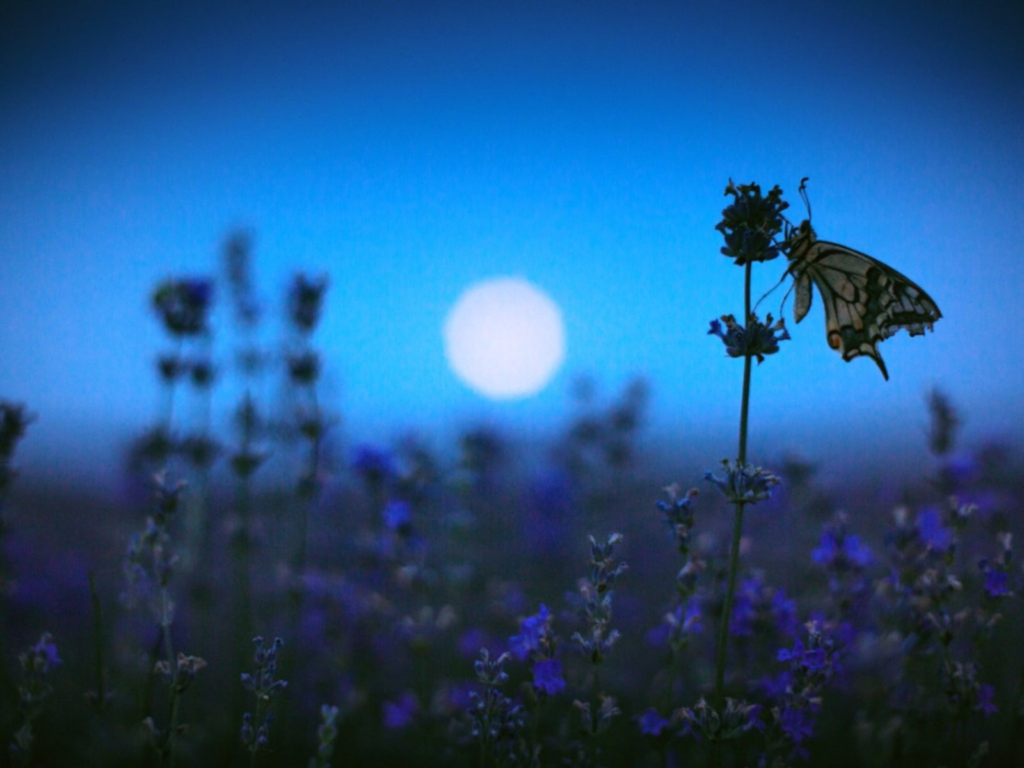
Complementary Features
Elevate your moon garden with these additions:
- Wind chimes: Add gentle ambient sound
- Reflective ornaments: Incorporate gazing balls or mirrored accents
- White garden furniture: Provide visible seating areas
- Water features: Install fountains or small ponds for reflective surfaces
- Solar lighting: Use subtle path lights that charge during day and illuminate at night
Creating Nighttime Ambiance
Design your space for maximum evening enjoyment:
- Minimalist approach: Avoid cluttering the space with too many elements
- Strategic plant groupings: Cluster similar plants for visual impact
- Vertical elements: Include trellises or structures for moonflower vines
- Open design: Allow moonlight to penetrate the garden
- Viewing angles: Consider how the garden appears from different perspectives
Moon Garden Designs for Different Spaces
Small Space Moon Gardens
Limited space? Try these approaches:
- Container gardens: Group silver-foliaged plants with night bloomers in pots
- Vertical gardening: Use trellises and wall planters to maximize space
- Corner designs: Transform a small corner of your yard or balcony
- Window boxes: Plant evening-scented flowers near bedroom windows
- Hanging baskets: Suspend plants like trailing silver dichondra or night phlox
Expansive Moon Garden Layouts
For larger properties, consider:
- Moon garden rooms: Create dedicated outdoor rooms with seating areas
- Moonlight meadows: Plant drifts of white and silver flowers in naturalistic designs
- Night-blooming allées: Design pathways lined with fragrant evening plants
- Reflecting pools: Install water features that mirror the moon and stars
- Multi-sensory experiences: Incorporate sound, fragrance, and texture zones
The Ecological Benefits of Moon Gardens
Your night garden serves important ecological functions:
- Supporting nocturnal pollinators: Providing habitat for moths and bats
- Extended nectar sources: Offering food for beneficial insects throughout the day and night
- Biodiversity enhancement: Creating varied habitats for different species
- Environmentally friendly enjoyment: Utilizing natural moonlight rather than extensive artificial lighting
- Water conservation: Many silver-leaved plants are naturally drought-tolerant
Seasonal Highlights in Your Moon Garden

Spring Attractions
Early season features include:
- Spring bulbs: White daffodils, tulips, and hyacinths
- Evening primrose: Early blooming varieties
- Silver foliage emergence: Fresh new growth on artemisia and lamb’s ears
- Night-scented stock: Cool-weather annual providing early fragrance
Summer Night Bloomers
Peak season brings:
- Moonflowers: Rapid evening opening displays
- Night-blooming water lilies: Floating blooms on garden ponds
- Nicotiana: Abundant star-shaped flowers with evening fragrance
- Evening primrose: Dramatic sunset bloom opening
Fall Evening Garden
Extend the season with:
- White Japanese anemones: Late-blooming perennials
- Silver plume grasses: Ornamental grasses catching moonlight
- Late dahlias: White varieties continuing into fall
- White autumn crocus: Surprising late-season blooms
Conclusion: Your Personal Nighttime Retreat
A well-designed moon garden offers a magical space for relaxation and reflection after the sun sets. By selecting the right plants, incorporating reflective elements, and creating a thoughtful design, you can enjoy your garden well into the evening hours. Whether you have a small balcony or a spacious backyard, a moon garden adds a unique dimension to your landscape—one that connects you to the natural rhythms of day and night and provides a peaceful retreat from the demands of modern life.
Begin planning your moon garden today, and soon you’ll be enjoying the enchantment of flowers that come alive by the light of the moon.
